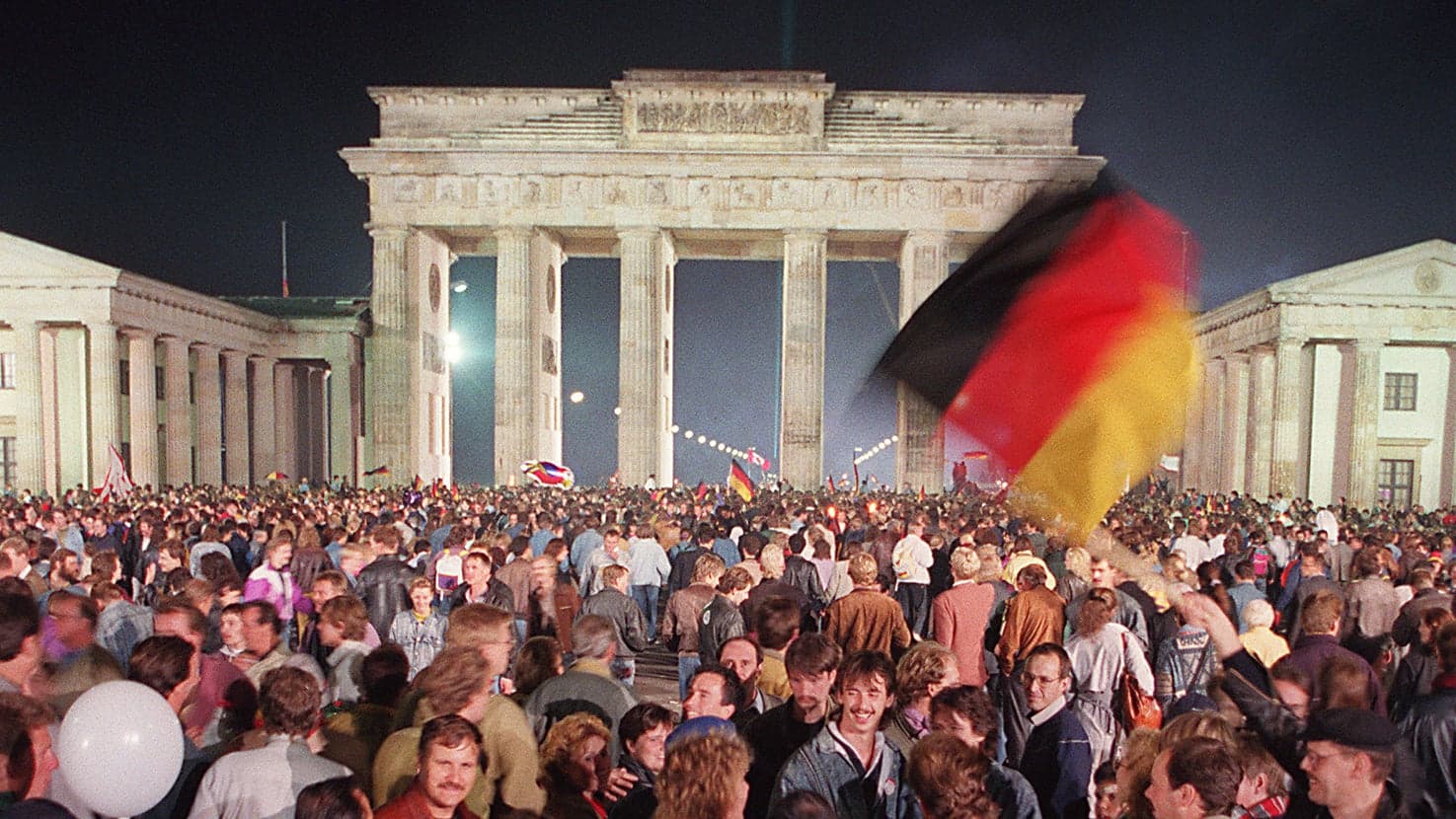Less than one year after the destruction of the Berlin Wall, East and West Germany come together on what is known as “Unity Day.”
Since 1945, when Soviet forces occupied eastern Germany, and the United States and other Allied forces occupied the western half of the nation at the close of World War II, divided Germany had come to serve as one of the most enduring symbols of the Cold War.
Some of the most dramatic episodes of the Cold War took place there. The Berlin Blockade (June 1948–May 1949), during which the Soviet Union blocked all ground travel into West Berlin, and the construction of the Berlin Wall in 1961 were perhaps the most famous. With the gradual waning of Soviet power in the late 1980s, the Communist Party in East Germany began to lose its grip on power. Tens of thousands of East Germans began to flee the nation, and by late 1989 the Berlin Wall started to come down.
Shortly thereafter, talks between East and West German officials, joined by officials from the United States, Great Britain, France and the USSR, began to explore the possibility of reunification. Two months following reunification, all-German elections took place and Helmut Kohl became the first chancellor of the reunified Germany. Although this action came more than a year before the dissolution of the Soviet Union, for many observers the reunification of Germany effectively marked the end of the Cold War.
